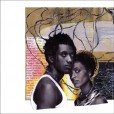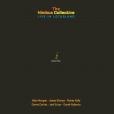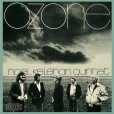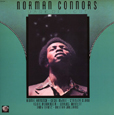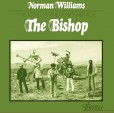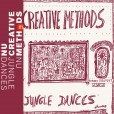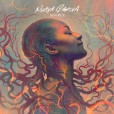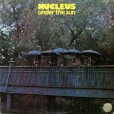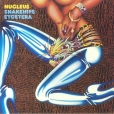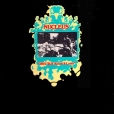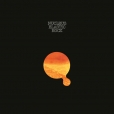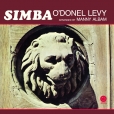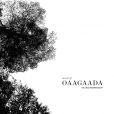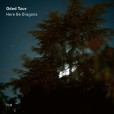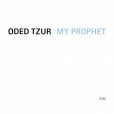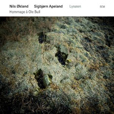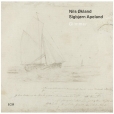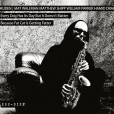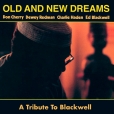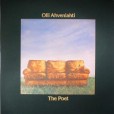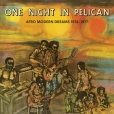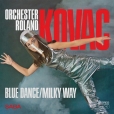Your basket is empty

The return of the AACM flautist to the visionary, Afro-futurist science fiction of Octavia Butler, alongside theremin-player Harris, together with fellow Chicago luminaries like cellist Tomeka Reid and trumpeter Ben LaMar Gay.
Tumultuous, visceral musical reflections on Butler’s ideas about Apocalypse, power, hybridity-versus-identity, race and feminism. ‘Writing myself in,’ she called it.
‘Stunning, moody, spiritual jazz from Ireland, recorded in 1979; featuring original compositions such as the deep collectors’ cut Spon Song, subtle Latin flavours on Spacer’s Delight, and a beautiful modal arrangement of the traditional Irish air Castle of Dromore.
‘A legendary recording in Ireland, Ozone reflects Kelehan’s keen appreciation of classic quintet-era Miles, with touches of the cerebral fusion of Ian Carr and the arranging genius of Neil Ardley. Not just a landmark Irish jazz set, Ozone is a lost classic of European jazz more widely.’
Licensed from producer John D’Ardis. Remastered at Abbey Road using the master-tapes; cut at D&M; pressed at Pallas. Presented with previously unseen photographs of the band, and their commentary.
A deadly trump card from Outernational. Essential, startling stuff. Bim bim bim.
With Stanley Clarke, Cecil McBee, Eddie Henderson, Carlos Garnett, Gary Bartz and Buster Williams.
A 1976 recording by this mainstay of the San Francisco jazz scene across the decades, who played with everyone from Sonny Stitt to Pharoah Sanders.
A message from Eddie Henderson…
‘It’s time. It’s time for all to hear the Bishop proclaim spiritual truths in his church, the One Mind Temple, dedicated to the spirit of John Coltrane. The time is also overdue for all to hear the Bishop proclaim musical truths through the medium of his alto saxophone. My first few gigs in 1962 were with the Bishop’s band. I’ll never forget what an inspiration it was for me learning how to play while standing next to the Bishop, who already had it together. I’m sure after hearing the Bishop, you will also agree that his time has come.’
‘A majestic feat in which she blends orchestral arrangements with R&B, jazz, broken beat and dub, resulting in a grand, nuanced record that feels airy and celestial without sacrificing the groove. It’s a deeply personal offering about her trek towards falling back in love with musical composition over the past four years.’
‘As well as pulsating modal workouts (The Seer), there’s real melodic beauty, too, from Set It Free (featuring London-based vocalist and trombonist Richie Seivwright) and We Walk In Gold (featuring Georgia Anne Muldrow) to the ethereal beauty of the instrumental Clarity. Garcia also reveals some lovely arranging touches — the way in which the Chineke! strings and guest vocalist Esperanza Spalding introduce album opener Dawn in free time, while the core trio of Joe Armon-Jones, Daniel Casimir and Sam Jones slowly introduce pulse in a gradual fade in; the dramatic strings-only coda appended to the epic title track; the fabulously rich string pizzicati which drive Water’s Path ever onwards; plus strings and sax ascending together in the all-too-brief Clarity (Outerlude)’ (Jazzwise).
Violin or hardanger fiddle, piano or harmonium duets: moody, contemplative, melodic crossings of Norwegian folk and classical in the manner of its nineteenth century muse. Recommended.
Mat Walerian, Matthew Shipp, William Parker, Hamid Drake.
Ace jazz-funk — somewhere between Herbie and RTF — originally released in Finland in 1976, on Love. Featuring the almighty jazz-dance classic Grandma’s Rocking Chair (later revisited by Kenny Dope and Ol’ Dirty Bastard), with Olli soloing on Fender Rhodes.
Opening in 1973, tucked into a tangle of railway parts scattered across an industrial park at the western edge of Orlando East, Club Pelican was Soweto’s first night-club, and its premier live music venue throughout the seventies.
Pretty much everyone on the scene passed through its doors — to sing, or perform in the house band, or hang out. Schooled in standards, and fluent in the local musical vernacular, the music would take off in different directions at a moment’s notice — SA twists on jazz, funk, fusion, disco — spurred by the sounds coming in from Philadelphia, Detroit and New York City.
One Night In Pelican encapsulates these halcyon times, with a musical roll call of all the key groups and players, besides evocative, previously-unseen photographs, cover artwork by Zulu ‘Batsumi’ Bidi, and notes by Kwanele Sosibo, lit up by a gallery of first-person testimony.
From the 1968 SABA LP Trip To The Mars, with its nods to library music and post bop, and charged, widescreen atmosphere. Blue Dance is a modal waltz dancer; Milky Way trips out into floating brass harmonies and sensuous solos.
